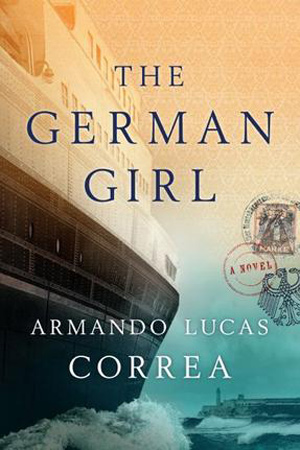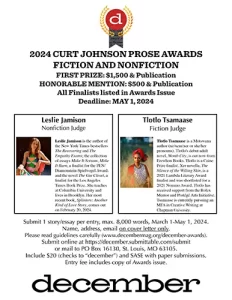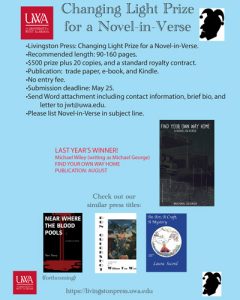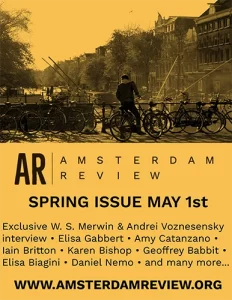The German Girl
Armando Lucas Correa’s novel The German Girl is a sad Holocaust story, one not heard before. Based on an historical tragedy, never acknowledged by the Cuban government, it nevertheless includes the names and pictures of many of the 937 passengers on the St. Louis ship, fleeing Nazi Germany, who were not allowed to disembark at Havana on May 27, 1939—nor allowed into Canada or the U.S. They had to return to Europe where England, France, Belgium and Holland each took some but by then Germany declared war and only the English refugees were safe. Before that, some passengers with precious cyanide capsules committed suicide, because so few were allowed into Cuba, where more discrimination followed them, forcing many other outsiders to make the perilous journey to Miami. This story made is individual, personal and emotional by the focus on the Rosenthal family fleeing Berlin.
Armando Lucas Correa’s novel The German Girl is a sad Holocaust story, one not heard before. Based on an historical tragedy, never acknowledged by the Cuban government, it nevertheless includes the names and pictures of many of the 937 passengers on the St. Louis ship, fleeing Nazi Germany, who were not allowed to disembark at Havana on May 27, 1939—nor allowed into Canada or the U.S. They had to return to Europe where England, France, Belgium and Holland each took some but by then Germany declared war and only the English refugees were safe. Before that, some passengers with precious cyanide capsules committed suicide, because so few were allowed into Cuba, where more discrimination followed them, forcing many other outsiders to make the perilous journey to Miami. This story made is individual, personal and emotional by the focus on the Rosenthal family fleeing Berlin.
The novel highlights women, women separated from their family members, women trying to save the men by raising them carefully, women leaving behind the men they love. It is sometimes hard to believe that this is a male author, so successfully does he get into women’s hearts and fears. The structure switches back between Hannah in 1939 and Anna, her grandniece in 2014. Hannah has a first love, as a child racing through Berlin with Leo of the long eyelashes and skating on the St Louis ship’s decks, not understanding the gravity of the adults’ behavior. Hannah Rosenthal, with her mother, Alma, make it onto Cuban soil in 1939 (thanks to father and husband Louis Rosenthal’s arrangements). Hannah’s grandniece, Anna, with her mother, travel from NYC in 2014 to Cuba to discover Hannah and the house where Anna’s father grew up.
Correa reminds us of his reportorial career, this being his first novel, with the brief details and short vignettes. The back and forth structure sometimes is repetitive and confusing, Hannah and Anna being not only physically alike but almost interchangeable in their histories. However, they fit the novel’s point—that history repeats its tragedies.
An early clue to this narrative approach comes from what Hannah’s mother told her:
Life is a jigsaw puzzle. She wakes up, attempting to find the correct piece, trying all the different combinations to create those distant landscapes of hers. I live to undo them so I can discover where I come from. I am creating my own jigsaw puzzles out of photos I printed at home from the images I found on Dad’s camera.
Even with the repetition, Correa maintains suspense, his dribbling out of facts so that their brief explanations come late in the narrative. One of his first suspense devices is the insertions of the actual telegrams coming from Cuba, ever more ominous about the passengers’ future. But the main suspense is in what happens to the characters. The reader might wish Correa had provided a family tree, but that would defeat his suspense, dealing out the relationships in snippets to make us wonder which father and whose child was this one and how did he die?
This novel interestingly shows Castro from a distance and without naming him, but in the framework of historical patterns. Outsiders leaving Cuba were called “worms,” and followers of religions like Jehovah’s Witness were labeled a “terrible blight on society” by the “great leader” or even sent to camps with the motto “Work will make men of you.” Anna, the future of the family, notes “History is repeating itself. What a lack of imagination.”
Because of the rigid back and forth storytelling and not much happening in the middle, the book has a pacing problem, a sameness in presenting the material. But it picks up once we reach Cuba, with this well-known Cuban writer. Hannah’s mother
protested from morning to night, whether it was about the heat, the wrinkles we would get from the sun, or the Cubans’ lack of manners. They didn’t speak, they shouted. They were always late, used far too much cumin in their cooking and sugar in their desserts. The meat was always overcooked, and the drinking water tasted of rusty pipes.
Anna sees the old house in faded glory, with its cracked mirror table and patches of damp and cracks but also a kind of palace with its beautiful French furniture. And flowers and their scents dominate.
When it rains, the smells of Cuba explode. Wet grass, whitewash on walls, the breeze, and the tangy sea air all mingle together. My brain was alert, trying to identify each odor separately. I could not get used to the downpours: it was as if the world were coming to an end [ . . . ] In Cuba, the worst thing was how heavily and slowly time passed, with too many intervals. A day could be an eternity [ . . . ] We lived on an island with only two seasons, dry and wet: where the vegetation grew ferociously; where everyone complained and talked of nothing but the past. As if they knew what the past really was! The past didn’t exist; it was an illusion. There was never any going back.
There is irony in the fate of the one son the Cuban women think they have saved, there is an emotional speculation about what happened to Hannah’s love, Leo of the long eyelashes, and there is the tragedy in a family mausoleum, a cemetery without bodies. It is a story of outsiders, their loss, people left behind, one the reader has to piece together through the novel’s progress. It is moving and unfortunately reflective of our times, as history repeats itself again.





